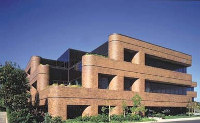
Clay Brick Floors & Walls
Bricks made of concrete have differentcharacteristics. See those in Surface Types.






- Wide range of colors, textures, and finishes.
- Bricks used for driveway paving are fired at higher temperatures and are stronger and denser than a standard brick. See "paver" type of brick on the Paver page
- Standard wall brick are approximately 3 1/2 inches high.
- "Thin Brick Veneer" are approximately 1/2" thick.
- "Used" or "Reclaimed" brick can be a very old brick of very high absorption and softness. They might also contain old sealers, paints, etc. that can effect sealer penetration and bonding. Test for highly variable absorption rates.
- The correct sealer will increase the strength and durability of brick and mortar. That is very important for historical brick and mortar made before 1933.
- How do you know if the brick is concrete or clay? Concrete will fizz from a drop of swimming pool acid. Clay will not. See testing for acid sensitivity.
- Some batches and types of brick can be very absorbent and will tend to soak up a lot of sealer if you just keep pouring it on. Too decrease the amount of sealer required see any label suggestions on the issue.
- Further "Items of Interest" for this surfacing, and all others, are at the bottom of this page.
Your Choices for Sealing
This surface can be of any texture, color, and absorbency.
Our suggestions to test are:- Penetrating petroleum solvent formulas with acrylic solids. Solids level might need to be adjusted if manufacturer allows dilution.
- Water based film forming that can flow out and self-level.
- Water based penetrating that is usually invisible.
- Click here to see What effects you can expect from each sealer type.
- Click here to see our suggested sealers, cleaners, and application tools.
Some questions you may not be thinking to ask right now that could become important:
. Was it sealed in the past? Does that matter?
. Will a new sealer be compatible with whatever was used before?
. What sealer will give the visual results you want?
. Will you also be able to have a sealer solve problem(s)? ( Answer: yes. Just know which to pick.)
Items of Interest
How to select a sealer
A sealer can do far more than just bead water and look pretty! To see what that is click here.
Important: If your project has had any sealer applied in the past, it must be evaluated differently. To see why, Click here!
Sealer "solids" levels?
A porous surface will require more gallons (more money) of a lower solids sealer than using a higher solids level sealer. That, plus different surfaces have different requirements. It is only a matter of which is best for your needs.
The more porous the surface, the more solids will be required to achieve the desired effects of gloss, strengthening, stopping efflorescence, etc.
The more porous the surface, generally the greater the need for the sealer to create a stronger surface.
An old sealer below the surface, even after stripping, will lower the absorption and porosity to some degree. Sometimes it is uneven below the surface and can create an uneven coloring effect with a color enhancing sealer applied later. Another reason to test first.
Do not believe yet that you have the type of surfacing you were told:
Colors fading?
Renew a glossy finish
Re: "penetrating sealers": do not apply thin layer upon thin layer. Apply a sufficient quantity to insure below surface penetration & bonding. A layer of sealer on top of another layer of sealer can result in poor bonding between layers and that can cause separation peeling that looks grayish.
Concerned about Doing It Yourself or what your contractor says?
If you are concerned about doing it yourself - consider that the satisfaction of a project is directly related to YOUR knowledge of what needs to be done and how. Who actually does the work is less important.
The goal for contractors is - NO CALL BACKS. A good contractor will understand the logic of not taking shortcuts.
©
The goal for contractors is - NO CALL BACKS. A good contractor will understand the logic of not taking shortcuts.
